Laravel vs Spring Framework: A Detailed Comparison
Laravel vs Spring are two separate backend frameworks written in two unique backend computer scripts, PHP and Java, respectively. While both frameworks are in great demand within their respective networks, CTOs are left wondering which is superior.
This comparative article exposes critical information about the productivity statistics, use cases, and adaptability of both of these frameworks. Let us begin!
1. Meet the Laravel Framework
Now it’s time to meet Laravel, another popular PHP framework across the globe. We are sure you must have come across many articles stating what laravel is? How is the framework beneficial? Some of the best Laravel development tools and resources to consider and what not!
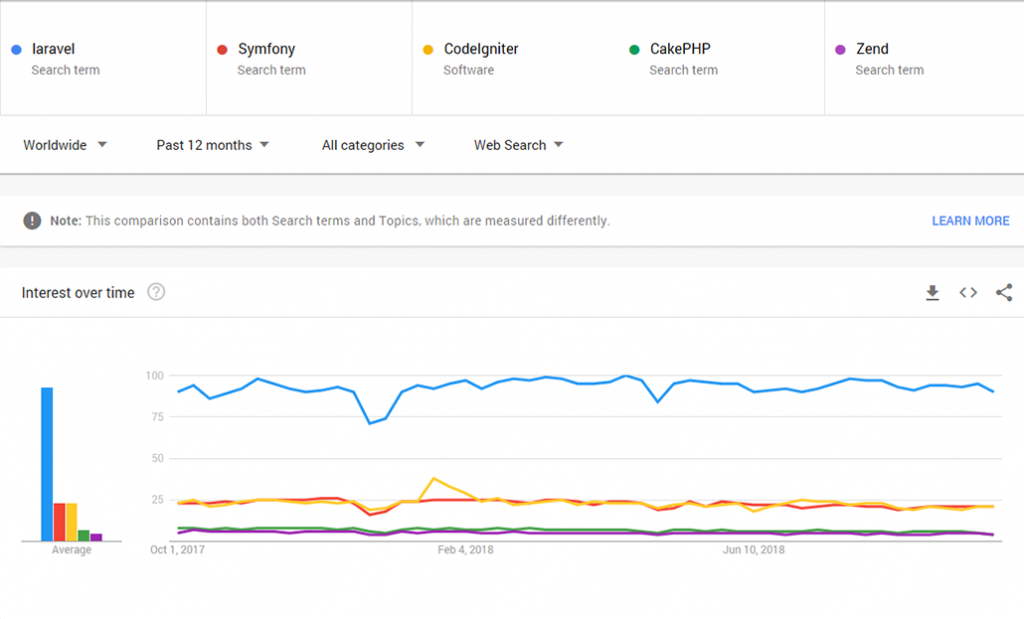
The graph clearly states that over the past five years, Laravel has succeeded in establishing itself as a clear winner. So what could be the reason for such increasing popularity? To start with, it is an open-source PHP web framework. The creator Taylor Otwell came up with this idea to surpass the CodeIgniter framework. And you know what’s the best part here? Though this one acts as an alternative to CodeIgniter but it comprises of symfony’s architectural patterns
Now here comes an important question, why Laravel?
1. MVC Architecture and Support
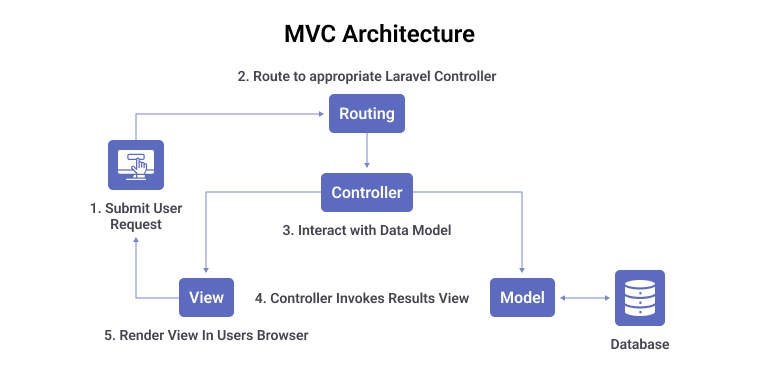
Available with a Model-View-Controller (MVC) architectural pattern. It is easy to use and as per developer’s perspective, creating applications irrespective of their size is completely possible. In fact, here’s an interesting part. No matter how large your project is, it won’t take more than five files to manage. Now finding files in logical directories can be super daunting. Fortunately, we have MVC support that makes things way simpler and better. Also, here you will be able to visualize clearly how your app appears in the real world.
2. Templating Engine

Written in PHP, Laravel 5 is available with an inbuilt template engine, also known as blade template. Here the database model can be combined with one or maybe more templates. What happens is the performance can be enhanced if you transpile the templates into the cached PHP code.
3. Artisan CLI
Next is the Artisan Command Line Interface (CLI) which enables you to make the entire process easy and streamlined. The tool also helps in data migrations, database management, and you can create skeleton code, models, controllers, and more. All those tedious and repetitive coding tasks can be skipped in one go.
However, the list does not end here there are several other features like eloquent ORM template, Dependency injection components and eloquent libraries making the backend of the website strong like none other.
2. Meet the Spring framework
The open-source, server-side and lightweight framework is mainly used to create modern Java-based enterprise applications. Speaking in terms of the application level, developers in order to focus well on the business logic make use of spring to get the infrastructural support.
What does spring incorporate? Well, here you get a group of full-stack modules or projects such as Spring Boot, Spring MVC and Spring Cloud, which is also called Spring Family. Also, it has a great community.
According to sources, the Spring framework has 41.3K stars on Github and 181,618 questions on Stackoverflow. And 6 out of 10 people are found using Spring to develop enterprise-grade applications, RESTFUL Services, complex web apps and tasks, etc.
Moving on! Spring comprises numerous features Let’s take a look at what are they
1. IoC Container
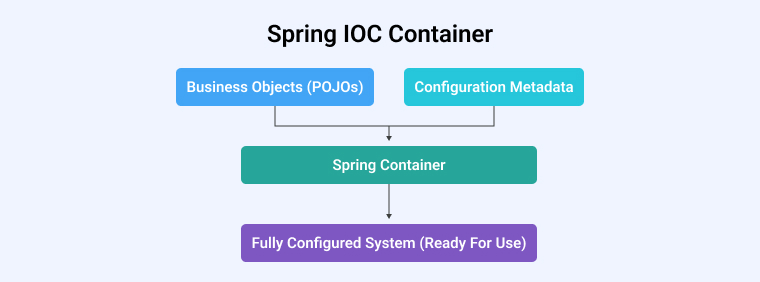
Mainly refers to the core container that uses DI or IoC pattern. Now what exactly this does is during the runtime it provides an object reference. Do you remember the service locator pattern? Exactly, this pattern acts as the best alternative available. It succeeds in handling the configuration management of application objects.
2. Spring MVC
Next is the Spring MVC. This feature allows developers or Spring experts to build web applications based on the MVC architecture. Here what happens is as soon as the user makes a request, it travels through the controller and then is allocated to different views or pages. ISP, Jasper Report, FreeMarker, and Velocity are popular techs, MVC can be well-integrated with.
3. Spring Boot
Spring boot or spring data is the most popular version of Spring Framework. It builds by taking separate pieces and combining them on top of Spring.
3. Laravel vs Spring Framework – An In-Depth Comparison
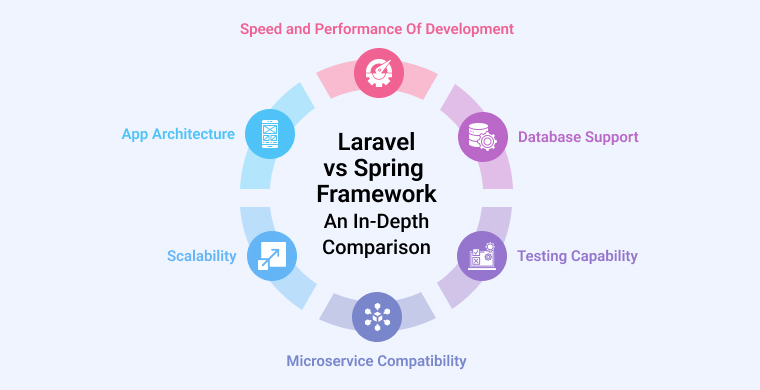
Before you make a decision of choosing the right platform; it is very crucial to know the difference between the two! I am sure the below-detailed comparison of Laravel vs Spring will help you in selecting the right framework.
1. App Architecture
First, we will begin with Spring. The Spring framework supports high-end modularity with modules. Now what exactly are these modules? Right from the core container to data integration, web container, Testing, Messaging, Aspect-Oriented Programming, etc. Here such kind of programming is supposed to support integration tests, unit tests, etc. Plus, the framework addresses integrations very well. Whereas the Laravel framework follows the MVC architecture. Everything is predetermined from the beginning. This results in conducting a streamlined development procedure.
For example, there is no such case that if a frontend developer wants to work on the view components then the backend developer has to wait for his chance to come. Both can work simultaneously.
2. Speed and Performance of Development
Are you developing large and complicated projects? If so, then this is a very crucial factor to take into account. . Having said that, let us figure out how laravel stands out in terms of performance. The performance of Laravel-based applications can be slow in comparison to other frameworks.
But, if optimized appropriately, things can change.
Here’s a quick tip, try using Cache tags. The app will automatically have a faster response time.
Whereas Spring delivers high-performing applications. It is mainly because of the Spring MVC module that clarifies the difference between the app’s model, view, and controller to further reduce the complexity among multiple app modules, especially in larger apps.
3. Microservice Compatibility
Lastly, Laravel turns out to be extremely compatible with microservice architecture. Whereas Spring has a separate module for building microservices known as Spring Boot that’s different from the Spring web framework.
4. Scalability
Frameworks have a considerable impact on the scalability of web apps; consequently, selecting the proper framework is critical. This section discusses how Laravel and Spring compare in terms of scalability.
For a long time, prominent businesses that use Laravel have scaled their apps without restriction. Due to its flexibility for quickly developing enterprises, Laravel derives scalability from PHP. Laravel can accomplish large horizontal scaling by selecting the right database and load balancer. Scalability of Laravel apps may be achieved with the use of MySQL, AWS, and certain sophisticated caching techniques.
Whereas, Spring enables the development of scalable apps because of its flexibility and concurrent processing capabilities. The latter allows Spring apps to respond to queries more quickly and dramatically minimizes app downtime when new functionality is implemented. Additionally, the framework is very extensible and efficient.
5. Testing Capability
To guarantee that your application development project runs smoothly under constant, high load and expanding market demands, it must undergo a set of tests to check compliance with UI standards, interoperability, and usability.
Given that Laravel is written in PHP, a plethora of testing toolkits are accessible to guarantee the development of a bug-free application. However, it’s natural to feel intimidated by the sheer volume of testing tools and materials accessible. To facilitate testing, Laravel tests scripts at two independent levels referred to as Unit tests and Feature tests. By default, Laravel includes extensive testing documentation and all the tools necessary to examine the application environment at multiple stages, including the ability to execute mock tests by simulating application code and events.
Due to the framework’s preference for enterprise-grade applications, it provides substantial support for testing, be it unit or integration testing. For testing isolated code, the testing environment contains mock objects such as JNDI and Servlet API. Spring testing also enables unit and integration testing through the use of support classes such as Spring MVC Testing Utilities and JDBC testing support, in addition to a variety of additional testing kinds.
6. Database Support
To record and manage large volumes of data, a database is always preferable to a key store or a local file. By selecting the appropriate database and framework, you may ensure that code is inserted and updated more quickly than with local storage options.
At the moment, Laravel offers four different database systems: Postgres, MySQL, SQLite, and SQL. Dealing with these databases is simplified by the flexible query builder, raw SQL, and Eloquent ORM. Even configuring numerous database connections is easier with Laravel. Only time will tell whether additional databases will accept Laravel. However, if you are familiar with the databases supported by Laravel, you will have no difficulty developing a completely regulated interaction between the database and the web app.
Spring provides a platform for interacting with database systems such as Object Relational Mapping and NoSQL databases. It adds support for SQL databases through the use of JDBC connections. Engineers have a wealth of options for developing production-ready Java programs with continuous database connection, since Spring seamlessly integrates data access techniques. Additionally, Spring Data is a distinct Spring Family module that eliminates boilerplate code and offers a default solution for source interfaces in database connectivity.
4. Conclusion
So this is it! I hope now you know the difference.. If you want to build an interactive website layout choose Laravel! Whereas if you want a Java-based application, choose Spring!
In case, if you still have doubts and queries, feel free to mention that in the comment section below.

Hardik Dhanani has a strong technical proficiency and domain expertise which comes by managing multiple development projects of clients from different demographics. Hardik helps clients gain added-advantage over compliance and technological trends. He is one of the core members of the technical analysis team.
Frameworks are many but the best ones cannot be ignored and PHP is one of those. The web development framework has been one of the...
 Jul 13, 2021
Jul 13, 2021 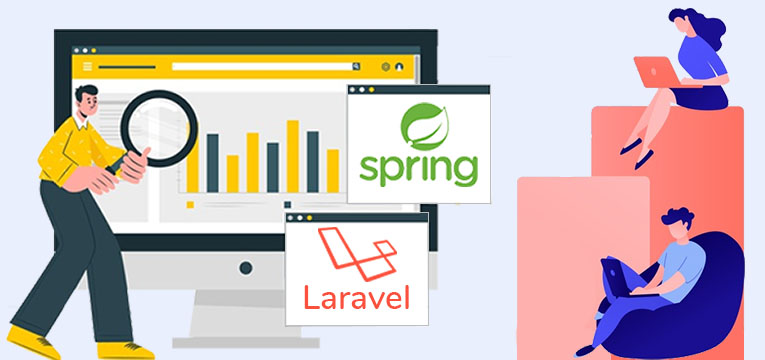
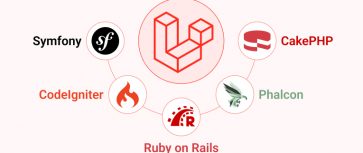


Indeed a good blog but You can add few more factors such as Testing capabilities, Database support and Community support. I hope you can add this factors in your blog to make it more user friendly. otherwise it is really worth reading blog!
After working with both the frameworks, I can easily say that Laravel is more popular and robust framework than spring. If you want to build enterprise software then you should go for spring else choose Laravel for your web development project.
Nice post! It has a detailed comparison over a range of factors. Thus, you can choose any of these two modern frameworks based on your project's needs and requirements.
Thank you so much for sharing this amazing piece of blog. I really like the way you demonstrated both of the frameworks with their benefits and limitations. After reading this, one can easily choose which framework is best suitable for them. Keep Sharing. Cheers!